Seungnyun Kim
Large Multimodal Models-Empowered Task-Oriented Autonomous Communications: Design Methodology and Implementation Challenges
Oct 23, 2025Abstract:Large language models (LLMs) and large multimodal models (LMMs) have achieved unprecedented breakthrough, showcasing remarkable capabilities in natural language understanding, generation, and complex reasoning. This transformative potential has positioned them as key enablers for 6G autonomous communications among machines, vehicles, and humanoids. In this article, we provide an overview of task-oriented autonomous communications with LLMs/LMMs, focusing on multimodal sensing integration, adaptive reconfiguration, and prompt/fine-tuning strategies for wireless tasks. We demonstrate the framework through three case studies: LMM-based traffic control, LLM-based robot scheduling, and LMM-based environment-aware channel estimation. From experimental results, we show that the proposed LLM/LMM-aided autonomous systems significantly outperform conventional and discriminative deep learning (DL) model-based techniques, maintaining robustness under dynamic objectives, varying input parameters, and heterogeneous multimodal conditions where conventional static optimization degrades.
Transformer-assisted Parametric CSI Feedback for mmWave Massive MIMO Systems
Oct 09, 2024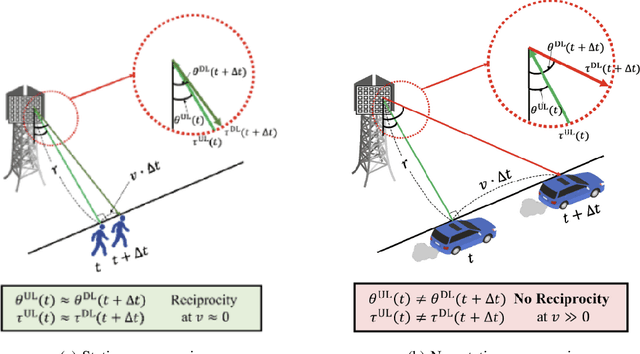
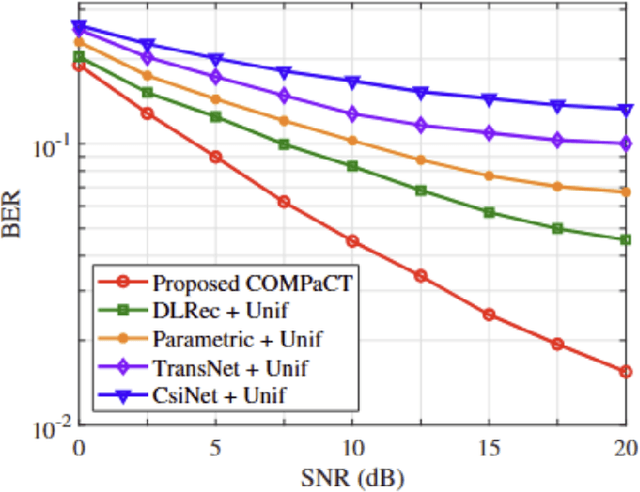
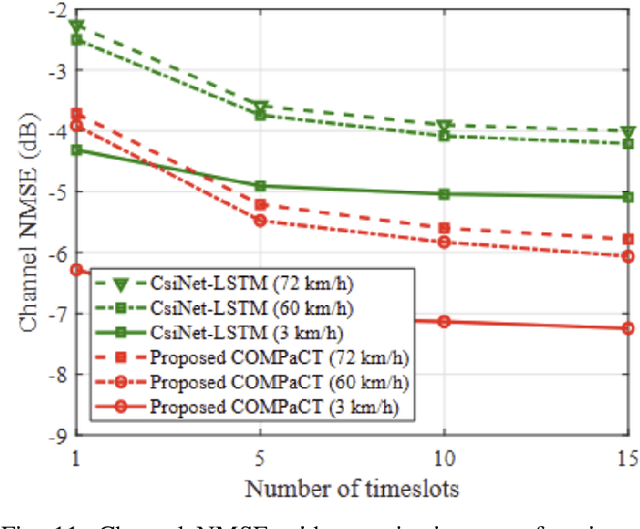
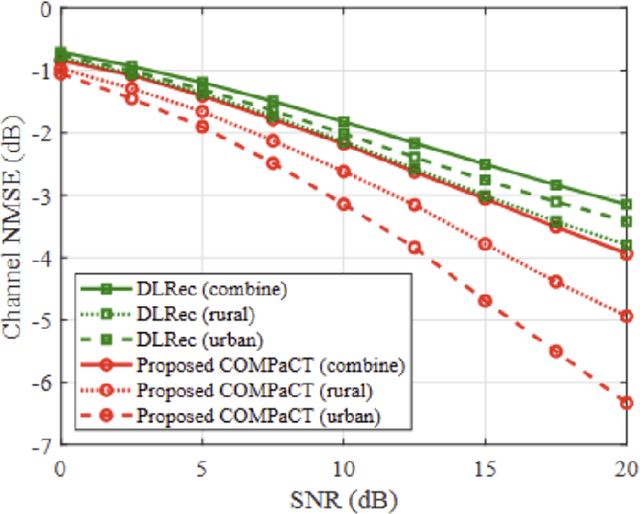
Abstract:As a key technology to meet the ever-increasing data rate demand in beyond 5G and 6G communications, millimeter-wave (mmWave) massive multiple-input multiple-output (MIMO) systems have gained much attention recently.To make the most of mmWave massive MIMO systems, acquisition of accurate channel state information (CSI) at the base station (BS) is crucial. However, this task is by no means easy due to the CSI feedback overhead induced by the large number of antennas. In this paper, we propose a parametric CSI feedback technique for mmWave massive MIMO systems. Key idea of the proposed technique is to compress the mmWave MIMO channel matrix into a few geometric channel parameters (e.g., angles, delays, and path gains). Due to the limited scattering of mmWave signal, the number of channel parameters is much smaller than the number of antennas, thereby reducing the CSI feedback overhead significantly. Moreover, by exploiting the deep learning (DL) technique for the channel parameter extraction and the MIMO channel reconstruction, we can effectively suppress the channel quantization error. From the numerical results, we demonstrate that the proposed technique outperforms the conventional CSI feedback techniques in terms of normalized mean square error (NMSE) and bit error rate (BER).
Deep Learning-aided Parametric Sparse Channel Estimation for Terahertz Massive MIMO Systems
May 12, 2024Abstract:Terahertz (THz) communications is considered as one of key solutions to support extremely high data demand in 6G. One main difficulty of the THz communication is the severe signal attenuation caused by the foliage loss, oxygen/atmospheric absorption, body and hand losses. To compensate for the severe path loss, multiple-input-multiple-output (MIMO) antenna array-based beamforming has been widely used. Since the beams should be aligned with the signal propagation path to achieve the maximum beamforming gain, acquisition of accurate channel knowledge, i.e., channel estimation, is of great importance. An aim of this paper is to propose a new type of deep learning (DL)-based parametric channel estimation technique. In our work, DL figures out the mapping function between the received pilot signal and the sparse channel parameters characterizing the spherical domain channel. By exploiting the long short-term memory (LSTM), we can efficiently extract the temporally correlated features of sparse channel parameters and thus make an accurate estimation with relatively small pilot overhead. From the numerical experiments, we show that the proposed scheme is effective in estimating the near-field THz MIMO channel in THz downlink environments.
Role of Sensing and Computer Vision in 6G Wireless Communications
May 07, 2024Abstract:Recently, we are witnessing the remarkable progress and widespread adoption of sensing technologies in autonomous driving, robotics, and metaverse. Considering the rapid advancement of computer vision (CV) technology to analyze the sensing information, we anticipate a proliferation of wireless applications exploiting the sensing and CV technologies in 6G. In this article, we provide a holistic overview of the sensing and CV-aided wireless communications (SVWC) framework for 6G. By analyzing the high-resolution sensing information through the powerful CV techniques, SVWC can quickly and accurately understand the wireless environments and then perform the wireless tasks. To demonstrate the efficacy of SVWC, we design the whole process of SVWC including the sensing dataset collection, DL model training, and execution of realistic wireless tasks. From the numerical evaluations on 6G communication scenarios, we show that SVWC achieves considerable performance gains over the conventional 5G systems in terms of positioning accuracy, data rate, and access latency.
Towards Intelligent Millimeter and Terahertz Communication for 6G: Computer Vision-aided Beamforming
Sep 06, 2022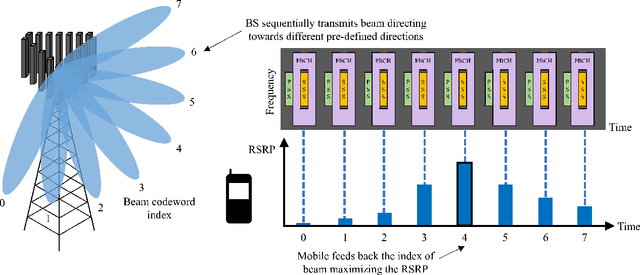
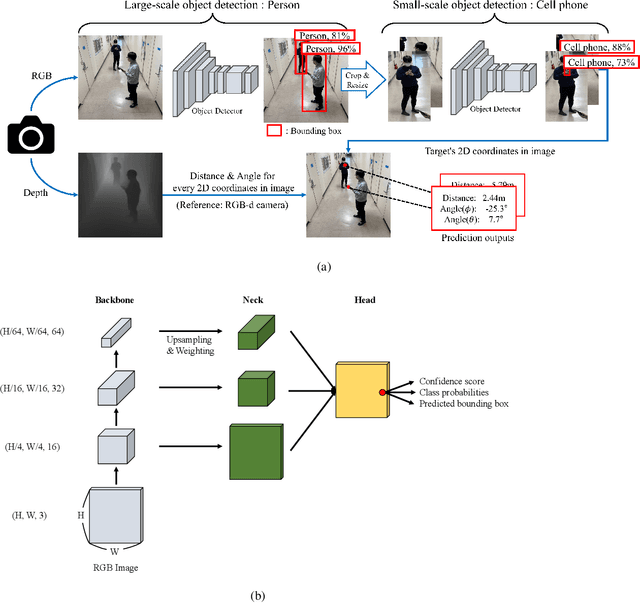
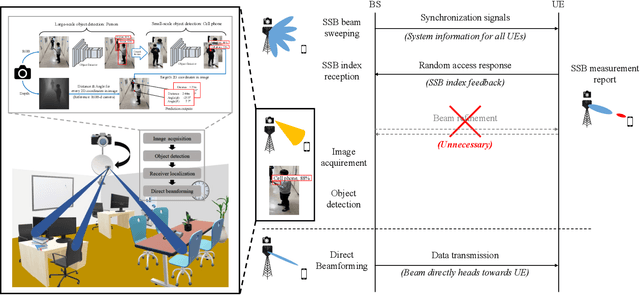
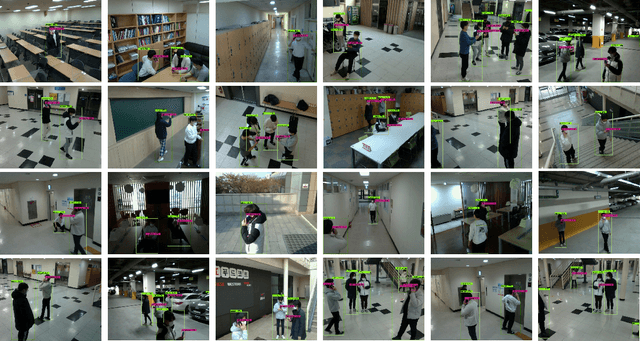
Abstract:Beamforming technique realized by the multiple-input-multiple-output (MIMO) antenna arrays has been widely used to compensate for the severe path loss in the millimeter wave (mmWave) bands. In 5G NR system, the beam sweeping and beam refinement are employed to find out the best beam codeword aligned to the mobile. Due to the complicated handshaking and finite resolution of the codebook, today's 5G-based beam management strategy is ineffective in various scenarios in terms of the data rate, energy consumption, and also processing latency. An aim of this article is to introduce a new type of beam management framework based on the computer vision (CV) technique. In this framework referred to as computer vision-aided beam management (CVBM), a camera attached to the BS captures the image and then the deep learning-based object detector identifies the 3D location of the mobile. Since the base station can directly set the beam direction without codebook quantization and feedback delay, CVBM achieves the significant beamforming gain and latency reduction. Using the specially designed dataset called Vision Objects for Beam Management (VOBEM), we demonstrate that CVBM achieves more than 40% improvement in the beamforming gain and 40% reduction in the beam training overhead over the 5G NR beam management.
 Add to Chrome
Add to Chrome Add to Firefox
Add to Firefox Add to Edge
Add to Edge